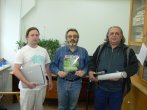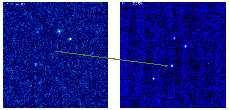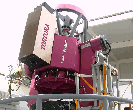|
Seven months ago, on Mar 19, 2008, at 09:12 Moscow time, a new star appeared
on the sky. The Sun had already risen over the Russia, but people of the
Western hemisphere might be able to see by their eyes a faint starlet near
one of Bootes constellation stars. This starlet appeared and faded by
an order of magnitude in a minute. Astronomers named it
GRB080319B or, informally, the
Naked-Eye Burst, as it was twice as bright as human eye can see a star.
We don't know whether anyone actually saw it by his eyes, but two small
automatic telescopes - Russian-Italian TORTORA and Polish "Pi of the Sky" -
did detect it and studied in details its optical behaviour simultaneously with
space-borne gamma-ray satellite Swift. Results of these three, along with a
number of other astronomical instruments all over the world, which studied
the transient emission at different wavelengths, has been published in one of
September issues of Nature.
The TORTORA, which name is an Italian word
for a dove, had been created by
our observatory scientists in collaboration with ones from Institute for
Precise Insrumentation, as well as staff of Italian Bologna State University
and Brera Observatory.
Additional information on this burst may be found at the following web
sites:
Royal Astronomical Society
NASA
|





